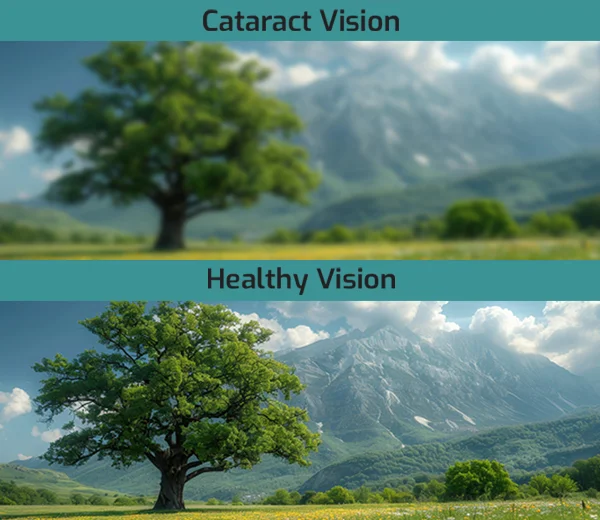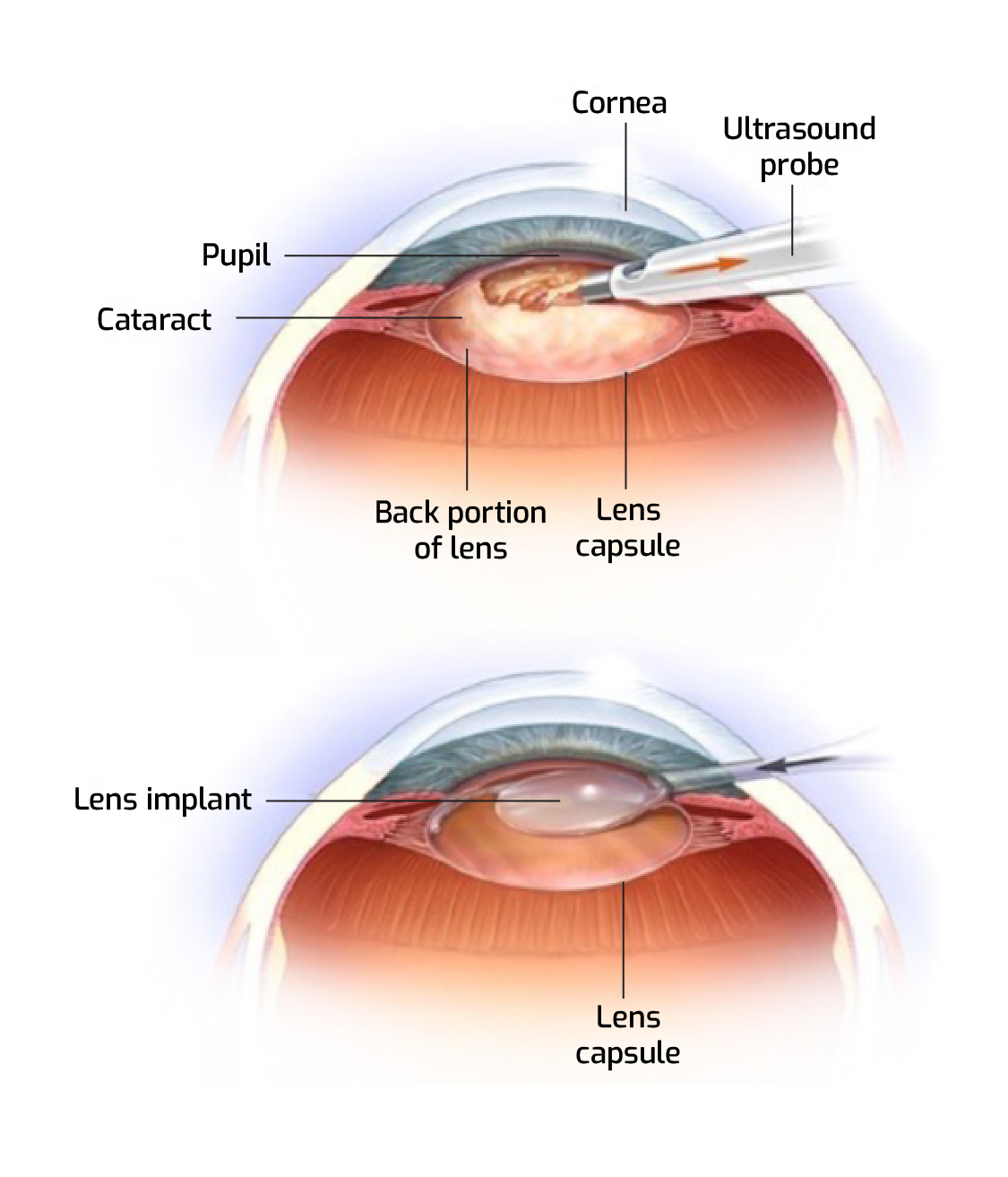
What is Cataract Surgery?
A cataract is a clouding of the lens inside the eye, causing vision loss that cannot be corrected with
glasses, contact lenses or corneal refractive surgery like LASIK.
As frightening as cataracts might sound, modern cataract surgery usually can restore vision lost to
cataracts and often can reduce your dependence on eyeglasses as well.
Thankfully, modern cataract surgery is one of the safest and most effective surgical procedures performed
today.

During cataract surgery, the clouded lens is removed, and a clear artificial lens (IOL- Intra Ocular Lens) is implanted. Surgical methods used to remove cataracts include: Using an ultrasound probe to break up the lens for removal during a procedure called phacoemulsification, your surgeon makes a tiny incision in the front of your eye (cornea) and inserts a needle-thin probe into the lens substance where the cataract has formed.
Your surgeon then uses the probe, which transmits ultrasound waves, to break up (emulsify) the cataract and suction out the fragments. The very back of your lens (the lens capsule) is left intact to serve as a place for the artificial lens to rest.
- Blurry vision
- Trouble seeing at night
- Seeing colors as faded
- Increased sensitivity to glare
- Halos surrounding lights
- Double vision in the affected eye
- A need for frequent changes in prescription glasses
- An overproduction of oxidants, which are oxygen molecules that have been chemically altered due to normal daily life
- Smoking
- Ultraviolet radiation
- The long-term use of steroids and other medications
- Certain diseases, such as diabetes
- Trauma
- Radiation therapy
- Congenital cataracts, which are present at birth or form during a baby’s first year, are less common than age-related cataracts.
- Secondary cataracts are caused by disease or medications. Diseases that are linked with the development of cataracts include glaucoma and diabetes. The use of the steroid prednisone and other medications can sometime lead to cataracts.
- Traumatic cataracts develop after an injury to the eye, but it can take several years for this to happen.
- Radiation cataracts can form after a person undergoes radiation treatment for cancer.
- Older age
- Heavy alcohol use
- Smoking
- Obesity
- High blood pressure
- Previous eye injuries
- A family history of cataracts
- Too much sun exposure
- Diabetes
- Exposure to radiation from X-rays and cancer treatments
One surgical method, known as phacoemulsification, involves the use of ultrasound waves to break the lens apart and remove the pieces.
Extracapsular surgery involves removing the cloudy part of the lens through a long incision in the cornea. After surgery, the natural lens is replaced with intraocular lens.
Surgery to remove a cataract is generally very safe and has a high success rate. Some of the risk cataract surgery includes: infection, bleeding, retinal detachment, though incidences of all those complications are less than 1%. Most people can go home the same day as their surgery.